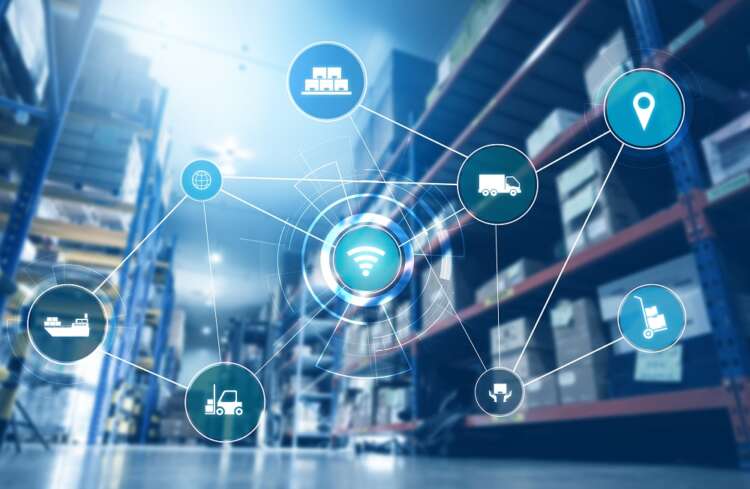Business
From Reactive to Proactive, How to Re-Imagine your Supply Chain Ecosystem for the Future

By Chris Baker, Managing Director EMEA of Anaplan
The dynamic landscape we’ve experienced over the past few years has proven just how quickly one seemingly small hiccup in supply chain operations can trigger a domino effect for global markets, consumers, and profits. Last year we were inundated with stories of the chaos – in Germany and Los Angeles, congested ports nearly tripled shipping times globally, while in the UK the shortage of workers, including lorry drivers, made it increasingly more difficult to get goods to customers on time – or even at all. With the supply chain influencing anywhere from 60 to 80 percent of business revenues, it’s no wonder that organisations are scrambling to adjust their strategies in an attempt to mitigate future supply chain risks.
While the past few years have proven that we can’t predict the future – especially when it comes to supply chain volatility – it has shown us that there are steps that organisations can take today to create a more agile supply chain ecosystem and a more resilient bottom line.
Predictive Data: Anticipating Climate Events
Data is becoming an invaluable part of building up resilience within the supply chain – it can even help to anticipate the impacts of a changeable climate. Over the last few years, extreme weather events have become more intense and more frequent. In the last 18-months alone we’ve had a taste of just how detrimental unexpected weather-related events can be to an organisation’s supplier network. The semiconductor supply chain, for example, was thrown into disarray when cold storms in Texas and droughts in Taiwan shut down chip production. This left even the biggest brands – from Volkswagen to Apple – unable to secure the inventory needed to meet the rising demand for their products.
Thankfully, advancements in technology have made it easier for organisations to anticipate and react to unexpected climate events. For instance, a company leveraging Anaplan for supply chain planning can utilise Google’s new Supply Chain Digital Twin to plan multiple scenarios against models of their entire supply chain ecosystem – from their suppliers and inventories to the flow of goods across their business. Additionally, this technology enables the seamless integration of external data sources, like weather data, to ensure models reflect what’s happening outside the organisation. With this level of visibility and insight, supply chain leaders can identify potential points of failure across their network – from production sites to packaging facilities – and, with this knowledge, can prepare their operations for possible weather-related disruption or change.
Stay ‘On Trend’ with Advanced Intelligence
Beyond weather-driven supply chain volatility, organisations are also dealing with a massive change in consumer preferences and buying behaviours. The pandemic has triggered a seismic shift in the way consumers shop. Now, with the rise of social media platforms, apps like TikTok and Instagram have become arenas that are continuously influencing consumer preferences. Beyond their traditional purpose of posting pictures, socialising with friends, and watching videos, they have become a marketplace that consumers are increasingly using to shop for a variety of products – from gym clothes to kitchen blenders. The fast-paced nature of these kinds of social media sites means that consumer preferences can be swayed in a matter of minutes.
TikTok is currently ranked amongst the most popular social networking apps in the world, projected to reach 755 million monthly users in 2022 – making it one of the internet’s most powerful consumer influencers. Overnight, a viral TikTok video can create an instant craze for a new product, dance, or life hack. As a result, businesses can suddenly find themselves faced with unplanned spikes in demand, stockouts, and backorders. This spontaneous increase in demand can lead to major headaches for business leaders who must decide whether the viral moment will last long enough to warrant a rushed restock, or if the demand will begin to normalise, potentially leaving excess inventory and overhead costs.
To cope with this, supply chain leaders need to transition to a more proactive position when it comes to navigating product virality and the rise of social-media-driven consumer buying behaviours. Once again, technology and data will be critical to this success. For instance, demand sensing can help businesses prepare for buying trends by scanning social media and point-of-sale data for product mentions and trends. Instead of planning inventory based on what happened in year’s past, supply chain leaders can use demand sensing to track shifts in buying behaviours, stay on top of trends, get a head start on repositioning inventory and adapt orders to meet any social media-driven spikes in demand.
Plan for the Unexpected
From TikTok trends driving viral moments to the impact of a worsening climate, there is no question that unexpected shocks will continue to disrupt supply chain networks and revenues in the years to come. So, while it’s true that we can’t predict the events of the future ahead, leveraging the tools and insights available to us can help us anticipate, prepare, and pivot with greater confidence. If organisations can successfully reconfigure their supply chain operations and adopt a more proactive, data-driven approach to supply chain planning, they can help set their business up to not only mitigate risk, but withstand, and thrive, in the face of incoming challenges.

-
Top Stories2 days ago
After VW plant victory, UAW sets its sights on Mercedes in Alabama
-
Investing2 days ago
Forex Market Trends to Watch Out For in 2024
-
Top Stories2 days ago
Hedge fund borrowing hits five-year peak, Goldman Sachs says
-
Business2 days ago
Mike Bahun and Fundraising University Make a Lasting Impact on Sports Programs Nationwide







